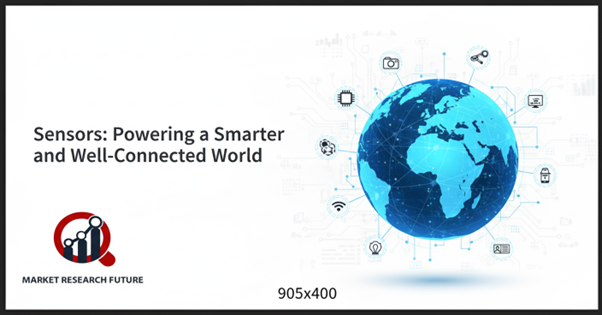Sensors: Powering a Smarter and Well-Connected World

Sensors have become the quiet helpers that make our lives easier. Sensors are everywhere, from the notification that lights up your phone to the smartwatch that tracks your heart rate. These smart devices can sense changes in their environment, including light, pressure, motion, or temperature, and turn them into usable data that makes modern life possible.
The Increasing Need for Sensors
The sensor industry around the world is growing very quickly. Sensors are now necessary for innovation in almost every industry, including healthcare, automotive, industrial automation, aerospace, and even farming, as digital transformation speeds up. Smart cities, connected cars, and wearable gear are all becoming more popular, which means that advanced sensing technologies are always in demand.
Sensors are important for accuracy, efficiency, and sustainability in today's industries. In healthcare, they help keep an eye on patients' health from a distance. In cars, they make sure people are safe by using collision detection and adaptive control systems. In manufacturing, they keep an eye on quality and guess when equipment will need repairs. The sensor market is changing faster than ever since so many people are using them.
Different kinds of sensors Reflecting Technological Advancement
Sensors for vision and imaging
These sensors "see" the world by using light. They take pictures and process them, which makes things like facial recognition, industrial inspection, and self-driving cars possible. Modern imaging sensors use AI and optics to help people make better decisions.
Sensors that detect closeness
These sensors are very important in robotics, automation, and cellphones since they can find things nearby without touching them. They make things safer and better for those who don't want to touch things, which is a big plus in places where hygiene is important.
Sensors for temperature
Temperature sensors monitor heat levels in solids, liquids, or gases. They are used in everything from home thermostats to medical devices. They are very important for keeping industrial processes and everyday appliances running at their best.
Sensors for Radiation
These sensors check for alpha, beta, or gamma radiation levels to keep healthcare, research, and environmental monitoring safe. Their accuracy is very important for important scientific and military uses.
Sensors that work with light
Photoelectric sensors use variations in light to find objects that are moving or not moving. They are the most important parts of automation and are utilized in gates, packaging lines, and counting systems.
In conclusion
Sensors will continue to be the invisible force behind everything as the world becomes more automated and connected. The future of the sensor industry appears better than ever because of continued improvements in AI and the Internet of Things.

Leave a Comment